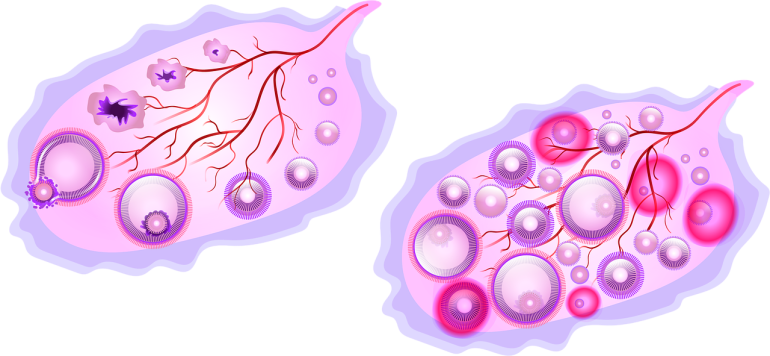(This article by Dr Suman Bijlani was published in the Cosmopolitan magazine in Jan 2010)
Polycystic ovaries or PCOS is one of the commonest endocrinological ailment affecting women of the reproductive age group today. The incidence of this disorder is on the rise, thanks to a more stressful lifestyle, changing food habits and an increasing trend towards obesity.
This article throws light on this multifaceted and enigmatic disorder which is affecting the lives of millions of women today.
What do you mean by polycystic ovaries?
Every month the ovary produces and releases one egg which is responsible for regular menstrual cycles. In the polycystic ovary, the follicles that contain eggs do not mature and hence are not released from the ovaries. Instead, the follicles accumulate as cysts in the ovary, thus the term polycystic ovaries. These collecting cysts in the ovaries lead to hormonal changes in the woman’s body and also may be the cause for infertility. Insulin resistance is an important aspect of this condition.
How do you know you have this condition?
Patients may present with various symptoms … the commonest being delayed and infrequent periods, acne or excess facial and body hair (male pattern) along with obesity.
Some women have difficulty in getting pregnant . A large proportion do not show any symptoms and may be accidentally diagnosed on sonography.
How do you diagnose polycystic ovaries?
The gynaecologist may suspect this condition based on the symptoms and then advise sonography and blood tests. All polycystic appearing ovaries are not PCOS. This condition is diagnosed based on a combination of symptoms, signs and blood reports.
Are there any long term health problems associated with this condition?
Unfortunately, yes. The body fat and carbohydrate metabolism are adversely affected, leading to increased risk of Type II diabetes, high cholesterol and heart disease. Obesity, of course increases the risk. She is more prone to developing uterine cancer at a later age.
How do you treat it?
The “treatment” depends on the symptoms of the patient.
We treat irregular cycles with hormones, those with excess hair growth may need to go for various hair removal treatments along with hormones to prevent regrowth.
Drugs like metformin and myoinositol help reduce insulin resistance. Infertile women need to seek treatment from a specialist who would give medication and injections to cause growth and release of eggs from the ovaries. Laparoscopic ovarian drilling is another option which can give good results in selected cases.
Some women may even need IVF (test tube baby) treatment. In all cases, treatment is incomplete and ineffective without lifestyle modifications such as diet, regular exercise and stress management.
Is this condition curable?
There is no definitive cure for this condition, however lifestyle modification, esp dietary and exercise with maintenance of ideal weight is the most effective remedy.
Due to the diverse clinical presentations, each patient needs an individualised and holistic approach to treatment in order to improve the quality of life and prevent long-term complications.

